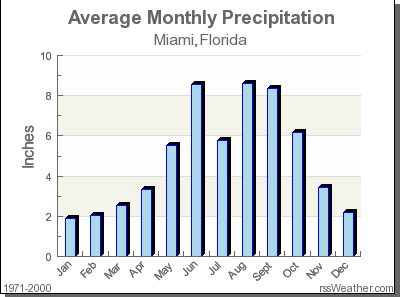The climate of ancient Egypt has long captivated scholars, historians, and the general populace alike. With its arid deserts and life-giving Nile, this complex relationship between climatic conditions and human habitation offers a fascinating glimpse into one of the world’s most celebrated civilizations. The dynamism of ancient Egyptian civilization cannot be disentangled from its geographical and climatic contexts. Thus, understanding this relationship is crucial for comprehending the cultural, agricultural, and technological developments of the era.
The predominant climatic feature of ancient Egypt was its desolate, arid landscape punctuated by the legendary Nile River. Stretching across the breadth of the country, the Nile played an indispensable role in transforming a barren expanse into fertile land. The climate consists of a hot desert environment characterized by extremely high temperatures, especially during the summer months when strategies for survival had to be rigorously devised. Average summer temperatures often soared beyond 40 degrees Celsius (104 degrees Fahrenheit), creating an environment that seemed inhospitable.
However, the unyielding heat paradoxically fostered resilience and innovation among the inhabitants. The Nile’s annual inundation—where the river overflowed its banks—was an extraordinary natural phenomenon, occurring between June and September. This flooding deposited nutrient-rich silt onto the surrounding fields, rendering the land cultivable. Consequently, this seasonal cycle dictated the agricultural calendar and fundamentally shaped early Egyptian society. The agricultural bounty gleaned from these waters allowed for the establishment of one of history’s most sophisticated civilizations, successfully defying the relentless desert climate.
Yet, it was not merely the physical characteristics of the Nile that shaped ancient Egypt; it was the symbiotic relationship between the people and their environment that bred ingenuity. Egyptians became adept at exploiting the climate for irrigation and farming, developing intricate canal systems that maximized the benefits of the Nile’s flooding. The ability to cultivate crops such as wheat, barley, and flax was a direct response to the subtropical climate, further solidifying the relationship between human activity and climate. These crops played a pivotal role in the economy and sustenance, dictating social structures and trade routes.
The climate also had a profound influence on Egyptian architecture and urban planning. Ancient Egyptians constructed their monumental architecture, including temples and pyramids, with an acute awareness of the severe weather conditions. Buildings were often aligned and designed in ways that maximized ventilation and minimized sun exposure, demonstrating an early understanding of climate-responsive design. The Great Pyramid of Giza, with its precise orientation, stands as a testament to the ingenuity of ancient builders, who adapted to the harsh desert heat and strong winds that could erode unprotected structures over time.
Climate also functioned as a vital determinant for societal organization and culture. The rigid seasonal patterns defined by rainfall and temperature cycles dictated agricultural practices, leading to the establishment of a calendar that revolved around the inundation of the Nile. Festivals and rituals were often aligned with these climatic occurrences, instilling a deep-seated reverence for the natural world. Gods and goddesses were personified as elemental forces, reflecting an intrinsic acknowledgement of nature’s influence over daily life.
Moreover, the harsh desert climate necessitated communal cooperation in ways that fostered social cohesion. The collective effort required for large-scale irrigation projects and crop management encouraged a sense of unity. Thus, the environment served as both a crucible and a catalyst for complex societal structures, as the interplay of climate and community forged a distinctive cultural legacy that endured for millennia.
However, while the Nile provided sustenance, the surrounding deserts posed perpetual challenges. Sandstorms, capable of erasing tracks and covering fertile lands, brought disaster to agricultural pursuits. Additionally, long dry spells could cause food shortages, leading to devastating famines that could threaten the very existence of Egyptian society. The inhabitants of ancient Egypt had to remain vigilant and resilient in the face of the unpredictable desert climate—a reality that necessitated adaptability and foresight. This susceptibility to environmental fluctuations created a continuous dialogue between the people and their climate.
Intriguingly, the changing climate of ancient Egypt can also elucidate aspects of historical decline and transformation. As climatic conditions fluctuated—potentially influenced by broader global climatic shifts—Egypt faced challenges such as drought and resource scarcity, contributing to the ebb and flow of its dominance. The environmental stresses may have precipitated societal upheavals, invasions, and, ultimately, transformations that forged the Egypt we know from historical accounts.
Today, as we regard the ancient ruins and artifacts left behind, it is essential to appreciate how deeply entwined the climate of ancient Egypt was with its accomplishments and failures. Understanding these climatic influences not only enriches our knowledge of history but also emphasizes the urgency for contemporary societies to address their environmental challenges. The ancient Egyptians’ adeptness in navigating the vicissitudes of their climate serves as both a lesson and an enduring inspiration for modern civilizations. Recognizing this complex interplay of man and nature is critical for building sustainable futures in a world increasingly vulnerable to climate change.
In conclusion, the climate of ancient Egypt—forged in the crucible of desert heat—shaped the very foundations of a civilization that thrived against daunting odds. The legacy of this extraordinary relationship between people and their environment persists, reminding us of the delicate balance we must strive to maintain with our own surroundings. This historical lens not only tells the story of survival but also highlights the potential for human innovation in the face of relentless climatic adversities.




